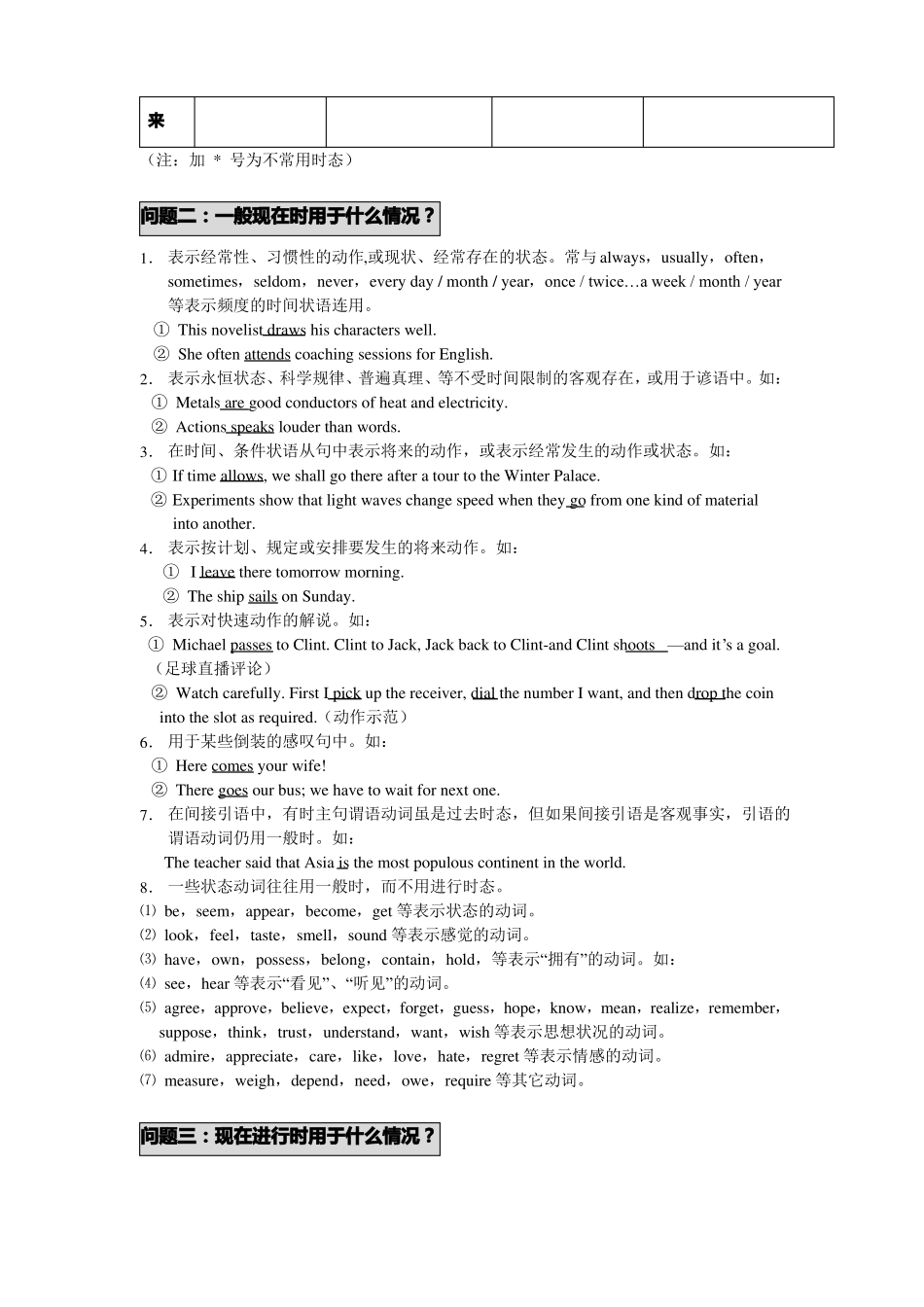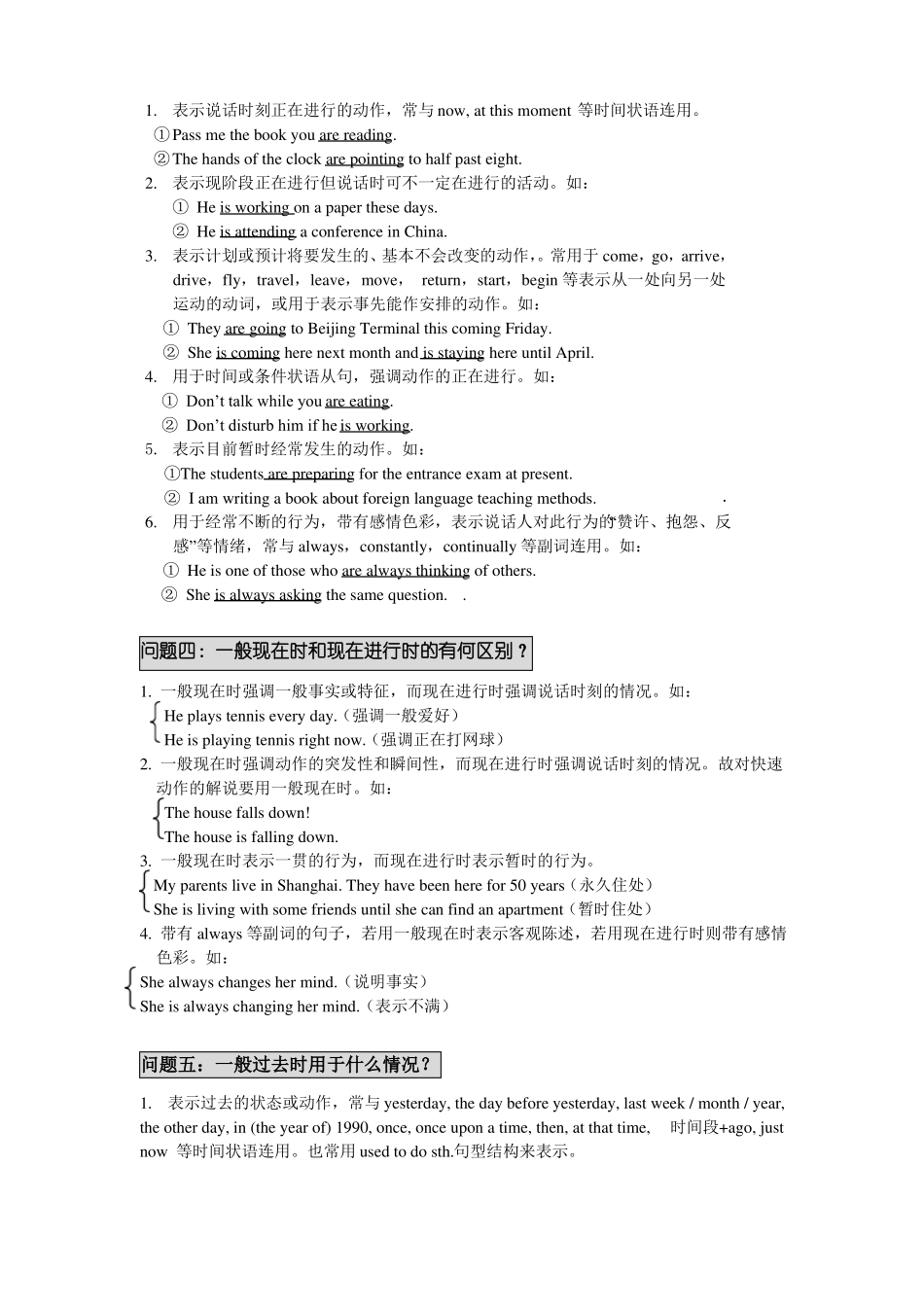时态动词的时态和语态导读动词时态和语态是英语学习过程中非常重要的一环,也是语法学习中的一个难点。本章将十六种动词时态予以总结并进行比较;同时归纳了动词语态方面容易混淆的问题,给予分析,旨在帮助同学们掌握好这一关键语法。一、 知识点拨(一) 动词的时态(tense)问题一:动词的时态有几种?英语的时态从时间上看,可分为现在、过去、将来和过去将来四大类,每一类又可分为一般、进行、完成和完成进行西种情况。因此,共有十六种时态,其中常用的时态有十二种。各时态以动词 do 为例,列表如下:现在过去将来过去将过去将来时should/would do*过去将来进行时should/wouldbe doing*过去将来完成时should/wouldhave done*过去将来完成进行时should/wouldhave been doing一般时态一般现在时do/does进行时态现在进行时am/is/are doing完成时态现在完成时have/has done完成进行时态现在完成进行时have/has been doing一般过去时did一般将来时shall/will do过去进行时was/were doing将来进行时shall/will be doing过去完成时had done将来完成时过去完成进行时had been doing*将来完成进行时shall/will have doneshall/will have been doing来(注:加 * 号为不常用时态)问题二:一般现在时用于什么情况?1. 表示经常性、习惯性的动作,或现状、经常存在的状态。常与 always,usually,often,sometimes,seldom,never,every day / month / year,once / twice…a week / month / year等表示频度的时间状语连用。① This novelist draws his characters well.② She often attends coaching sessions for English.2. 表示永恒状态、科学规律、普遍真理、等不受时间限制的客观存在,或用于谚语中。如:① Metals are good conductors of heat and electricity.② Actions speaks louder than words.3. 在时间、条件状语从句中表示将来的动作,或表示经常发生的动作或状态。如:① If time allows, we shall go there after a tour to the Winter Palace.② Experiments show that light waves change speed when they go from one kind of materialinto another.4. 表示按计划、规定或安排要发生的将来动作。如:① I leave there tomorrow morning.② The ship sails on Sunday.5. 表示对快速动作的解说。如:① M...


